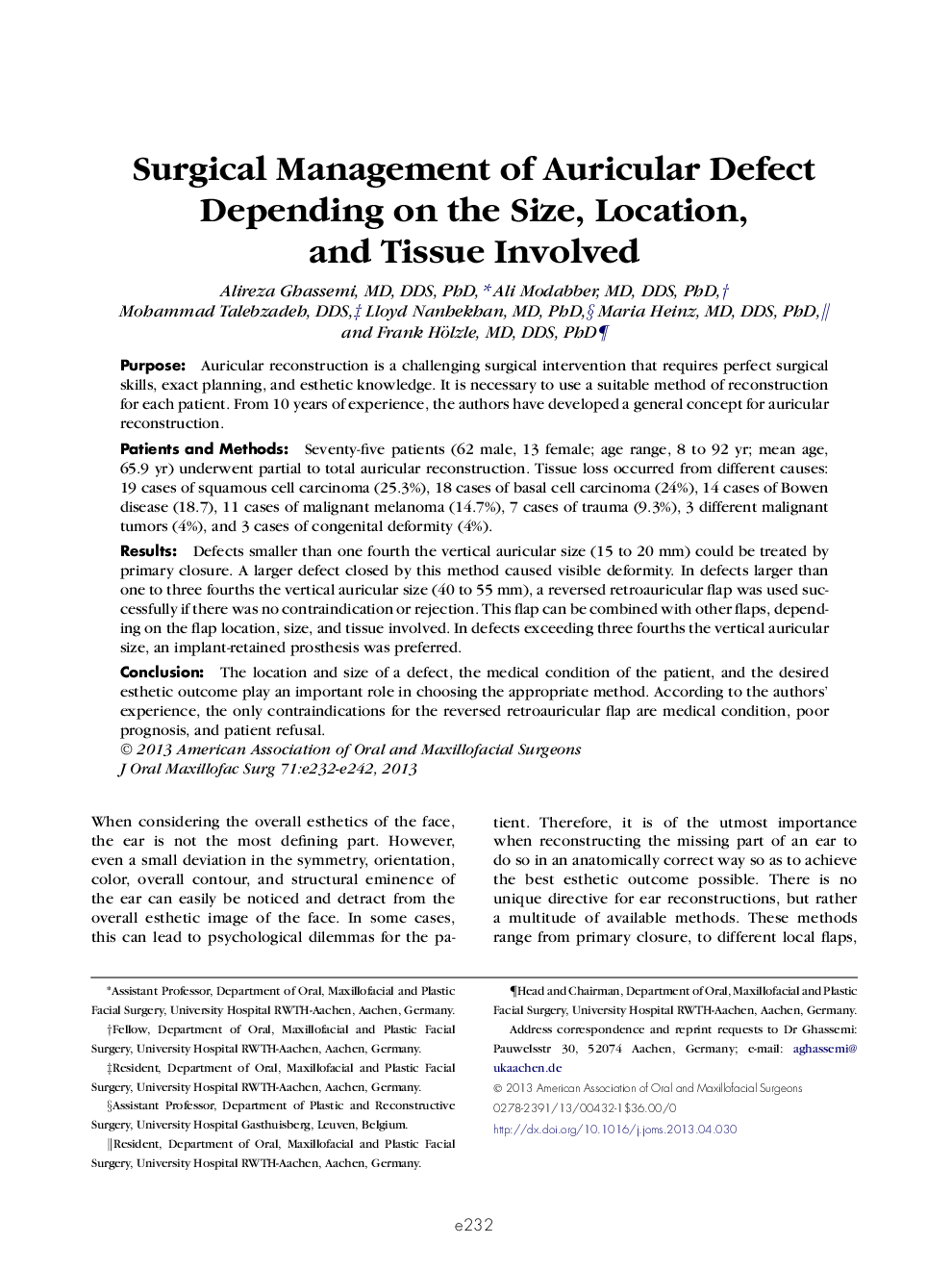| Article ID | Journal | Published Year | Pages | File Type |
|---|---|---|---|---|
| 3153257 | Journal of Oral and Maxillofacial Surgery | 2013 | 11 Pages |
PurposeAuricular reconstruction is a challenging surgical intervention that requires perfect surgical skills, exact planning, and esthetic knowledge. It is necessary to use a suitable method of reconstruction for each patient. From 10 years of experience, the authors have developed a general concept for auricular reconstruction.Patients and MethodsSeventy-five patients (62 male, 13 female; age range, 8 to 92 yr; mean age, 65.9 yr) underwent partial to total auricular reconstruction. Tissue loss occurred from different causes: 19 cases of squamous cell carcinoma (25.3%), 18 cases of basal cell carcinoma (24%), 14 cases of Bowen disease (18.7), 11 cases of malignant melanoma (14.7%), 7 cases of trauma (9.3%), 3 different malignant tumors (4%), and 3 cases of congenital deformity (4%).ResultsDefects smaller than one fourth the vertical auricular size (15 to 20 mm) could be treated by primary closure. A larger defect closed by this method caused visible deformity. In defects larger than one to three fourths the vertical auricular size (40 to 55 mm), a reversed retroauricular flap was used successfully if there was no contraindication or rejection. This flap can be combined with other flaps, depending on the flap location, size, and tissue involved. In defects exceeding three fourths the vertical auricular size, an implant-retained prosthesis was preferred.ConclusionThe location and size of a defect, the medical condition of the patient, and the desired esthetic outcome play an important role in choosing the appropriate method. According to the authors' experience, the only contraindications for the reversed retroauricular flap are medical condition, poor prognosis, and patient refusal.
